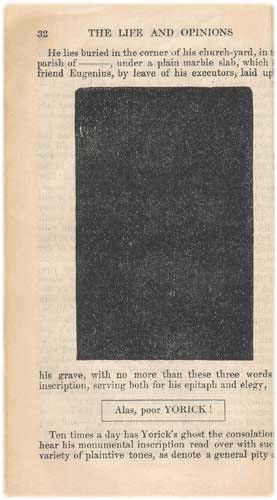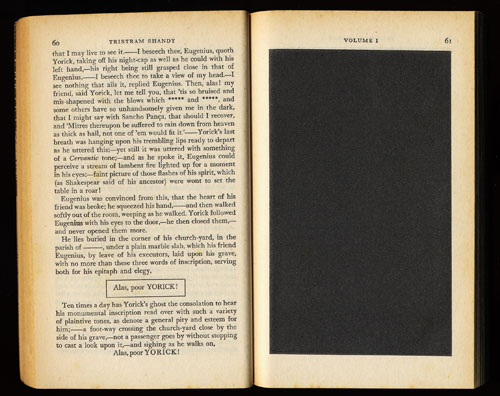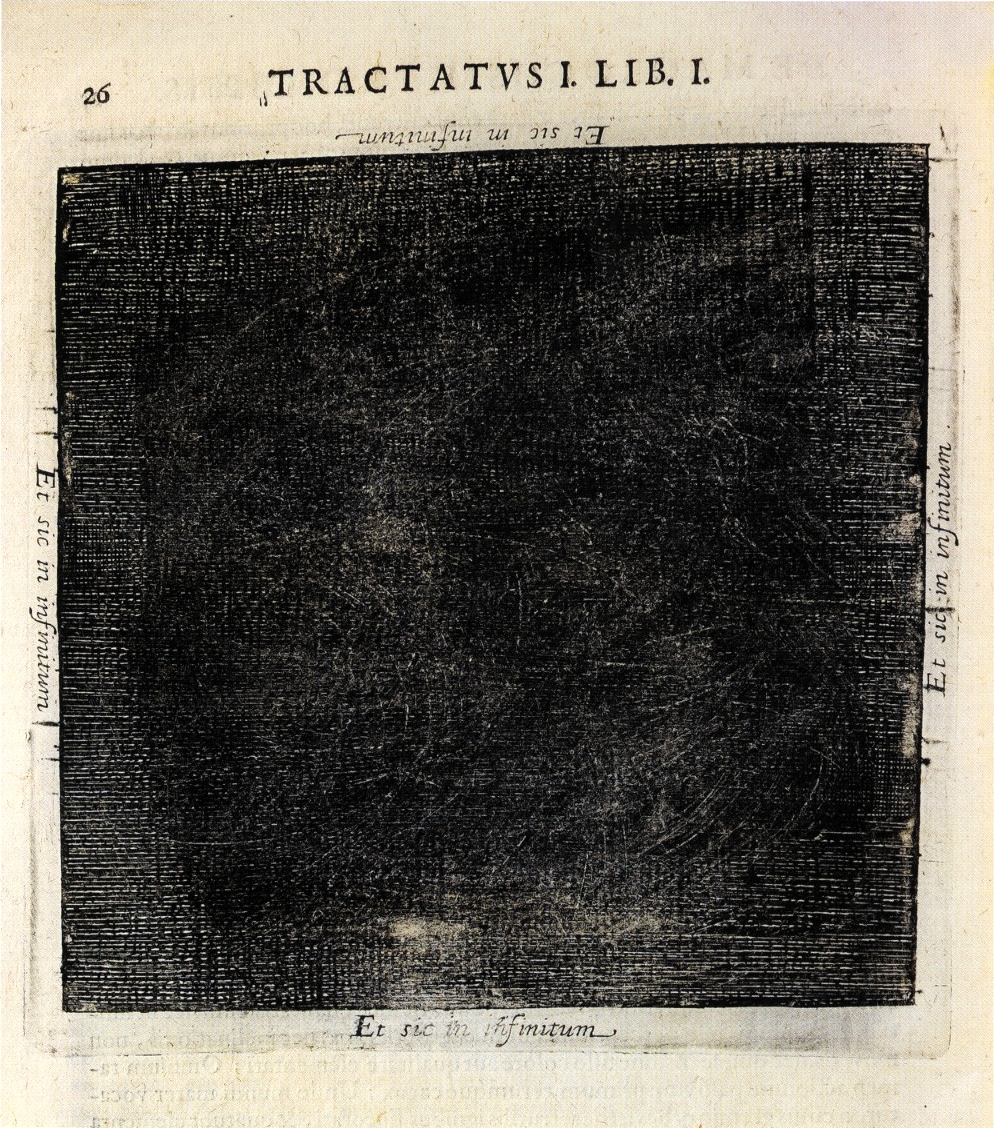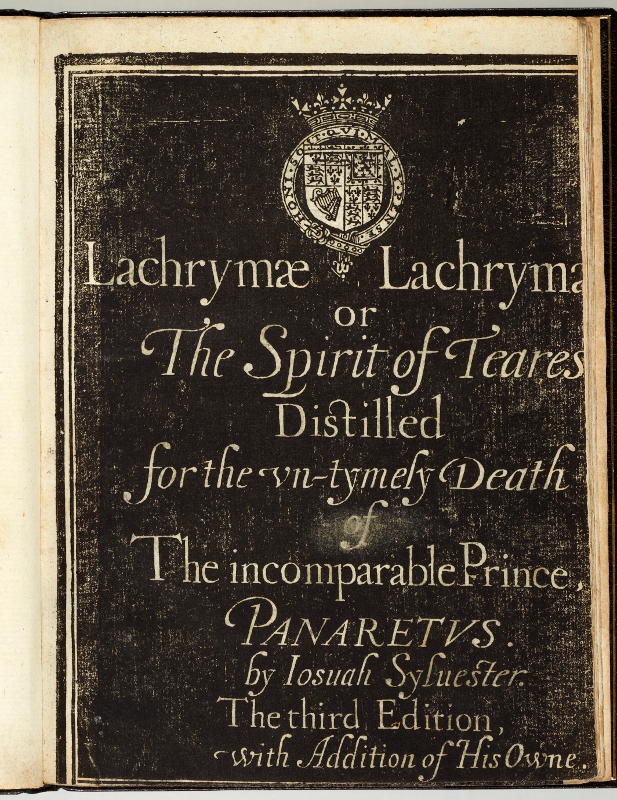

Closely Reading and Close Looking
(and Close Listening, Close Smelling, Close Touching, and Close Licking. And Close Dusting!)
Is there such a thing as "the black page" to which the narrator refers in the novel apart from the different ways it is printed in different editions? Or are there only a potentially infinite variety of black pages? Different page layouts and graphic design of the black pages in two different editions of Tristram Shandy. Notice how the effect of the page changes not only in the different black areas but on the proximity of that area to the text printed on the page. More broadly, how do we deal with the publication history of Tristram Shandy? In what ways are our version of the novel different from the version(s) Sterne's readers read?
 |
 |
Alas Poor Yorick (the talking skull)
Kenneth Monkman, "Sterne, Hamlet, and Yorick"
Possible sources for the black pages in volume one of Tristram Shandy (courtesy of Melvyn New's note in the Florida edition.

Robert Fludd, Utriusque Cosmi maioris salicet et minoris metaphysica... (1617)

Christopher Fanning, "Sterne's Page"
Digital facsimile of the text in the modernized in the modernized edition above.